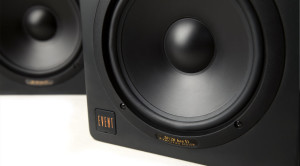Getting a great mix involves an awareness of the way others perceive audio and what they’re listening on, your mixing room, your reference speakers and your own taste. It doesn’t take a million dollar setup, only some knowledge of your tools, a well trained set of ears and the ability to compensate in your mix so that it translates well to other listening environments.
While some dream of studio monitor speakers that could take their mixes to the next level overnight, it’s just not that simple. A smart engineer references their mixes on multiple speakers and in many different environments. This allows you to adjust accordingly to find a balance that sounds and feels right on every kind of playback system.

In reality, not everyone is listening on the same mid to high end monitors you may be using in a typical studio environment. In fact, most people are listening on laptop speakers or in most cases, cheap headphones. Carefully consider your mixing choices with everyday listening environments in mind. The more options you have for playback, the better comparison and ultimately, the better mix you can achieve.
- Compare your mixes between the studio, car, headphones, computer speakers, mobile phone, laptop and the worst boombox you can find.
- Create a playlist of “Mix References” including songs you feel are sonically superior and can serve as a measuring stick for your own work. Listen to these mixes on the same speakers and compare them to your own.
- Mix your track at all volume levels. Some listeners may listen at extremely low volumes or equally high volumes. Make sure it shines for you at both extremes.
- DON’T mix at high volumes for more than a short amount of time. Ear fatigue is real and very quickly your mixing judgements will become distorted. Improve your mixes and protect your most valuable asset- your hearing!
- Reference with and without a sub woofer. Most listeners won’t be able to hear those sub frequencies anyway and they can seriously muddy your mix.
- For reference, use high and low pass filters on the master channel to roll off all high or low frequencies at once. This will let you better evaluate what you’re dealing with in the low and high end of the mix respectively.
- Step out of the room with your mix still playing. Listen down the hall or even on a different floor. You’d be surprised at the issues you can pick out from a different listening perspective.
- Trust your ears!
